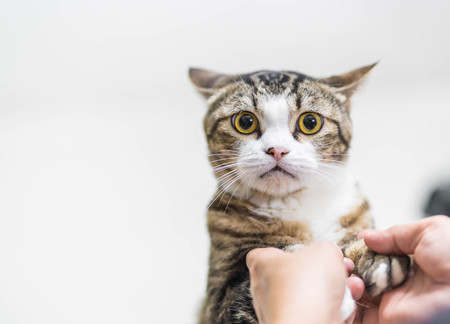1. Understanding the Behavior of Small Exotic Mammals
When handling small exotic mammals, understanding their behavior is crucial for ensuring their safety and comfort. Each species has unique traits, and recognizing signs of stress can help prevent injury to both the animal and the handler.
Common Behavioral Traits
Small exotic mammals display a variety of behaviors based on their instincts and environment. Here are some general traits:
| Species | Common Behaviors |
|---|---|
| Rabbits | Thump their hind legs when frightened, freeze when scared, may nip if uncomfortable. |
| Guinea Pigs | Vocalize when excited or scared, tend to run away when approached too quickly. |
| Sugar Gliders | Nocturnal, may vocalize (crabbing sound) when stressed, glide as a natural escape response. |
| Hedgehogs | Curl into a ball when scared, may hiss or puff up spines as a defense mechanism. |
| Chinchillas | Tend to jump when startled, may shed fur (“fur slip”) if grabbed too tightly. |
Recognizing Stress Signals
An essential part of handling small exotic mammals safely is identifying stress signals early. Some common signs include:
- Tense body posture: A stiff or rigid stance often indicates fear or discomfort.
- Evasive movements: Running away, hiding, or avoiding contact may mean the animal feels threatened.
- Aggressive reactions: Biting, scratching, or vocalizing loudly can signal distress.
- Panting or rapid breathing: This can indicate anxiety or overheating in certain species.
- Lack of movement: Freezing in place can be a fear response in many small mammals.
Tips for Reducing Stress During Handling
Avoiding unnecessary stress helps create a positive experience for both you and your pet. Consider these tips:
- Move Slowly: Sudden movements can startle small mammals. Approach them gently and give them time to adjust.
- Create a Quiet Environment: Loud noises can make animals anxious. Handle them in a calm and quiet space.
- Avoid Overhandling: Some species prefer minimal contact. Let them get used to your presence before attempting prolonged handling.
- Use Proper Support: Always support their body properly to prevent injury and make them feel secure.
- Treat-Based Positive Reinforcement: Offering treats can help build trust and make handling a more pleasant experience.
The Importance of Observing Individual Personalities
No two animals are exactly alike. Even within the same species, individual pets may have different comfort levels with handling. Pay close attention to their responses and adjust your approach accordingly. Some may warm up quickly to human interaction, while others require more patience and gradual socialization.
2. Preparing a Safe Handling Environment
Creating the right environment for handling small exotic mammals is essential to keeping them calm and ensuring their safety. A well-prepared space helps minimize stress, prevents accidental escapes, and reduces the risk of injuries for both you and your pet.
Choose a Quiet and Controlled Space
Small exotic mammals can be easily startled by loud noises and sudden movements. Selecting a quiet, enclosed area away from household distractions like TVs, children, and other pets will help create a calm atmosphere. Avoid handling your pet in open spaces where they could escape or hide in hard-to-reach areas.
Ensure Proper Lighting
Bright, direct light can make some small animals feel exposed and vulnerable. Instead, opt for soft, natural lighting or indirect artificial light to keep your pet comfortable while allowing you to see clearly.
Secure the Area to Prevent Escapes
Many small exotic mammals are quick and agile, making it crucial to secure the handling area properly. Close all doors and windows, block any gaps where they might squeeze through, and remove potential hiding spots that could make retrieval difficult.
Prepare Essential Handling Tools
Having the right tools nearby can make handling safer and more efficient. Here’s a simple guide to essential items:
| Item | Purpose |
|---|---|
| Soft Towels | Provides gentle restraint and comfort |
| Nitrile Gloves | Protects against bites or scratches (if necessary) |
| Secure Carrier | A safe place for temporary holding |
| Treats | Helps build positive associations with handling |
| Dimmable Light Source | Keeps lighting at a comfortable level |
Create a Stress-Free Experience
Your pet will respond better to handling if the experience is calm and predictable. Move slowly, use a gentle voice, and avoid sudden movements. Allow them time to adjust before attempting to pick them up.

3. Proper Handling Techniques for Different Species
Use species-specific handling methods to ensure both the animal’s safety and the handler’s well-being. Different small exotic mammals have unique physical characteristics and temperaments, so it’s important to handle each species appropriately.
Handling Techniques by Species
The following table provides general guidelines for handling some common small exotic mammals:
| Species | Proper Handling Method | Precautions |
|---|---|---|
| Rabbits | Support the hindquarters and hold close to your body to prevent kicking. | Avoid picking up by ears or scruff; they can injure themselves if they struggle. |
| Guinea Pigs | Scoop from underneath, supporting both the chest and hindquarters. | They are delicate and easily startled, so handle gently. |
| Ferrets | Support the torso with one hand while using the other to support the rear. | Avoid grabbing roughly; they may nip if uncomfortable. |
| Sugar Gliders | Cup them in your hands or allow them to climb onto you voluntarily. | Avoid sudden movements; they can leap away unexpectedly. |
| Hedgehogs | Scoop gently from underneath using both hands, allowing them to uncurl naturally. | If curled, do not force them open; wait until they relax. |
| Mice & Rats | Scoop up with both hands or allow them to climb onto you willingly. | Avoid grabbing by the tail; this can cause injury. |
Avoid Stressful Situations
No matter the species, always approach animals calmly and confidently. Avoid loud noises and sudden movements that might startle them. If an animal appears stressed, give it time to relax before attempting further handling.
The Importance of Proper Support
Mishandling can lead to injury or distress. Always ensure that small mammals feel secure when being held by providing proper support and allowing them to adjust to your touch at their own pace.
Taming and Trust Building
If an animal is not used to handling, spend time building trust by offering treats and letting it explore your hand before attempting to pick it up. Patience is key to creating a positive handling experience.
By using species-specific techniques, you can ensure a safe and comfortable interaction for both you and your pet.
4. Safety Precautions for Handlers
Handling small exotic mammals requires care and attention to ensure both your safety and the well-being of the animal. By following proper safety precautions, you can minimize the risk of bites, scratches, and potential zoonotic disease transmission.
Wear Appropriate Protective Gear
Wearing the right protective gear helps prevent injuries when handling small exotic mammals. Some animals may react unpredictably when stressed or frightened, so its important to be prepared.
| Protective Gear | Purpose |
|---|---|
| Gloves (leather or nitrile) | Protects against bites, scratches, and potential allergens. |
| Long-sleeved clothing | Reduces exposure to scratches from sharp claws. |
| Surgical mask | Lowers the risk of inhaling allergens or pathogens. |
| Safety goggles | Shields eyes from potential splashes or sudden movements. |
Practice Good Hygiene Protocols
Zoonotic diseases can spread between animals and humans through direct contact, bites, scratches, or contaminated surfaces. Following proper hygiene practices reduces this risk.
Wash Hands Before and After Handling
- Use soap and warm water for at least 20 seconds.
- If soap is unavailable, use an alcohol-based hand sanitizer.
- Avoid touching your face, mouth, or eyes while handling animals.
Disinfect Equipment and Surfaces
- Clean cages, carriers, and handling tools regularly with pet-safe disinfectants.
- Avoid sharing equipment between animals without thorough sanitation.
- If handling sick animals, use disposable gloves and disinfect all surfaces afterward.
Avoid Sudden Movements and Loud Noises
Small exotic mammals can be easily startled by sudden movements or loud noises, which may cause them to bite or scratch in self-defense. Always approach them calmly and speak softly to help them feel secure.
Recognize Signs of Stress or Aggression
An anxious or agitated animal is more likely to lash out. Watch for these common warning signs:
| Animal Behavior | Possible Meaning |
|---|---|
| Baring teeth or hissing | The animal feels threatened and may bite if provoked. |
| Tucking ears back or puffing up fur | A sign of fear or discomfort; proceed cautiously. |
| Aggressive lunging or swiping paws | The animal is defensive; avoid handling until it calms down. |
| Trembling or freezing in place | The animal is highly stressed; give it time to relax before attempting to handle it again. |
Create a Safe Handling Environment
A controlled environment helps prevent accidents while handling small exotic mammals. Consider the following:
- Select a quiet space: Reduces stress for the animal and minimizes distractions.
- Avoid high places: If the animal jumps or escapes, falls could cause injury.
- Kneel or sit while handling: Prevents dropping the animal from a dangerous height if it squirms unexpectedly.
- Cushion hard surfaces: Use soft towels or mats in case the animal slips out of your grip.
- Avoid overcrowding: Only allow necessary handlers in the room to keep interactions calm and controlled.
Taking these precautions will help ensure a safe experience for both handlers and small exotic mammals. By using protective gear, practicing good hygiene, staying aware of body language, and creating a stress-free environment, you can minimize risks while keeping these delicate animals comfortable during handling sessions.
5. Post-Handling Care and Observation
After handling your small exotic mammal, its important to monitor their behavior and physical condition. Some animals may experience stress or minor discomfort after being held, so taking the time to observe them ensures their well-being.
Signs of Stress or Injury
Watch for any unusual behaviors that could indicate stress or injury. Below are some common signs to look out for:
| Signs of Stress | Signs of Injury |
|---|---|
| Hiding more than usual | Limping or favoring a limb |
| Refusing food or water | Visible cuts or wounds |
| Panting or rapid breathing | Sensitivity to touch |
| Aggressive or fearful behavior | Bleeding from nose, mouth, or ears |
| Trembling or shaking | Dull or ruffled fur/skin |
Providing a Comfortable Recovery Environment
Your pet will need a safe and quiet place to relax after handling. Ensure their enclosure is clean, well-ventilated, and stocked with fresh food and water. Avoid loud noises and excessive handling during this time.
Tips for a Stress-Free Recovery Area:
- Avoid sudden changes: Keep their habitat in a familiar location.
- Add hiding spots: Provide shelters or tunnels where they can retreat.
- Maintain proper temperature: Ensure the enclosure stays at a comfortable level for their species.
- No disturbances: Limit interactions until they appear relaxed and back to normal.
- Monitor food intake: A sudden loss of appetite could indicate stress or illness.
When to Seek Veterinary Assistance
If your pet shows prolonged signs of distress, refuses to eat for more than 24 hours, or exhibits any injuries, contact an exotic animal veterinarian immediately. Early intervention can prevent complications and keep your pet healthy.
Your Role as a Responsible Pet Owner
Caring for small exotic mammals requires patience and attentiveness. By monitoring their post-handling behavior and ensuring they have a calm environment, you help them feel safe and comfortable in your care.


